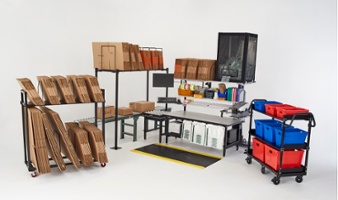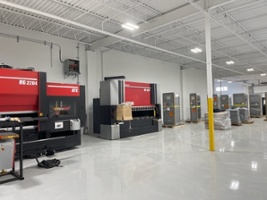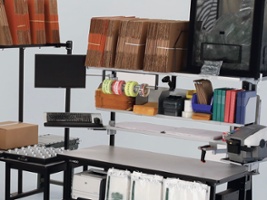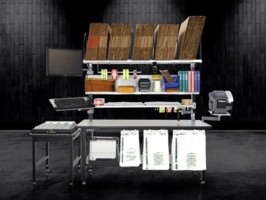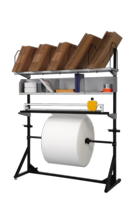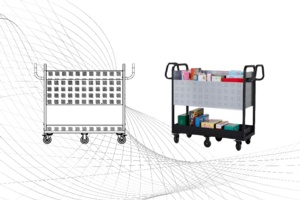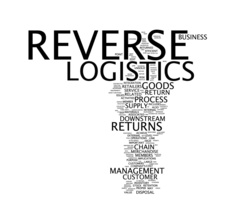As digital retail sales continue to climb—with 23% year over year growth—warehouses and distribution centers are looking to optimize their operations for e-fulfillment. The online purchase journey—on the consumer end—is as quick and easy as a matter of clicks; select the item, add to cart, and checkout. And customer expectations around expedited delivery and lower shipping costs are only getting more demanding. Purchasing decisions are increasingly made based on convenience, and consumers are opting for what’s easy.
On the backend, however, things are getting more and more complicated—a lot happens between that final click and the moment your new coffee mug arrives at your doorstep. As online shopping continues to gain popularity—online purchases are expected to account for 17% of all retail sales by 2022—keeping up with the increasing pace without sacrificing quality is more critical than ever. From slotting, picking, packing and shipping, every function of the fulfillment process and supply chain needs to be optimized for ecommerce to avoid hiccups and inefficiencies.
Over the years, warehouses have grown exponentially in size in order to accommodate the influx in orders; more sales mean more space, inventory and equipment to manage. When setting up your warehouse, you’ll want to maximize the usage of all your square footage. Determine an efficient and appropriate location for every item in your warehouse; when you look at your warehouse, you should think of the phrase “There’s a place for everything and everything in its place.” Slotting is not a set-it-and-forget-it job; staying organized is key. Organization should be based on sales volume, seasonality, purchasing behaviors and algorithms; efficient organization requires periodic evaluation for slotting optimization. Efficiency for efficiency’s sake isn’t the goal—everything you do should be in service of making your staff’s jobs easier and more efficient.

Larger warehouses also mean more people navigating increasingly complex operations; it’s critical to consider your employees health and well-being. If your employees can’t do their jobs comfortably and safely, you’ve got a problem. Set your staff up for success – make sure aisles, bays, shelves and SKUs are visibly marked. Think about placing items that are frequently purchased toward the front of your warehouse and consider putting items that are commonly purchased together near one another – it will save pickers valuable time and energy. Make sure pickers and packers are not bending or reaching too often, and take care to see that items are appropriately organized by weight with proper machinery and equipment to aid retrieval tasks nearby.
Warehouse and personnel management are traditional logistics concerns that have taken on new meaning in the “now economy.” This new age of ease and convenience brings entirely new considerations and potential costs. Shoppers want their deliveries quickly and at no added cost, and they expect the returns process to be just as seamless. People today are shopping differently, ordering more than they need with the intention of returning what doesn’t work. Customers increasingly would rather shop from the comfort of their own home, at any time, than head to a brick-and-mortar location. Shoppers are buying different items than they were ten years ago – ordering everything from tonight’s groceries to new washing machines.
Consumers have more options and ways to shop than ever before and have high expectations when it comes to customer service. Shoppers want assurance that their money spent is not wasted – they want to be able to return, exchange, and receive refunds if they’re not satisfied with their purchases. E-commerce has effectively become a two-way street. As inventory enters and exits the warehouse, it’s crucial to keep a clear, open line of communication so that customers have a positive shopping experience – order and delivery are the two windows customers have into your operation. If a customer has a question or an issue, prompt, informed customer service is the rule not the exception. While it might seem like there’s no money to be made on reverse logistics, a well-managed process not only enhances the customer experience, but also re-stocks saleable products quickly, sustainably, and efficiently – a win-win situation that builds brand loyalty and encourages future purchases.
At Dehnco, people are at the center of everything we do. We want to provide a positive experience for your workers as well as your customers. As warehouses and ecommerce operations continue to evolve, we can help provide strategic solutions to help you and your operation work, feel, and flow better. For more information on how we can support your ecommerce operations, visit our ecommerce solutions page.


